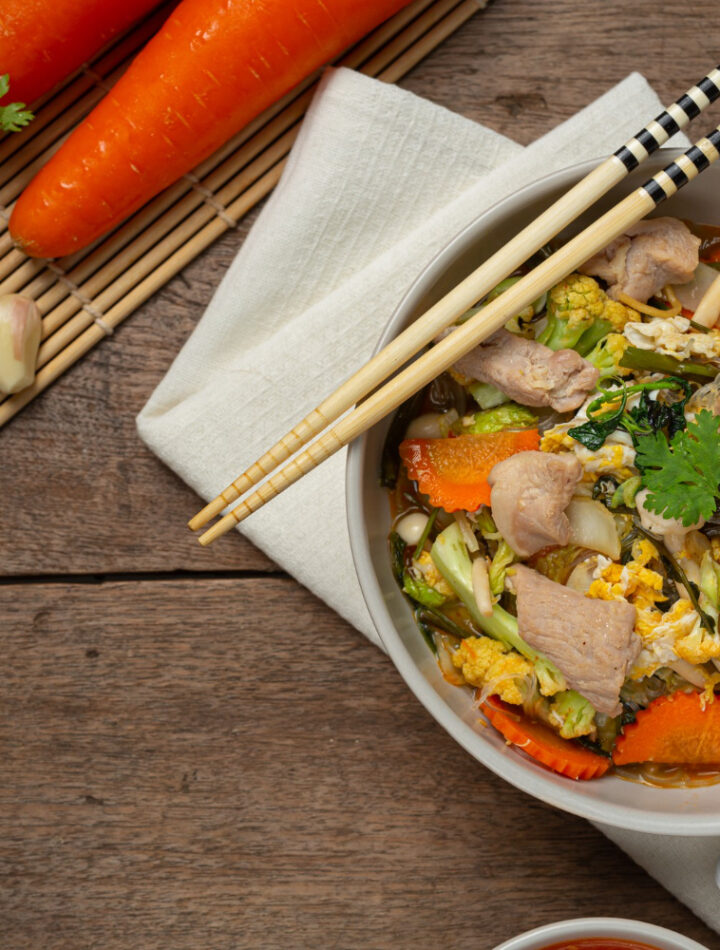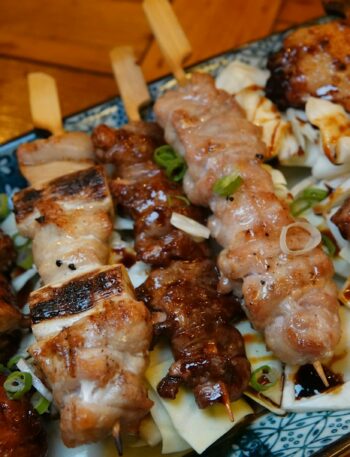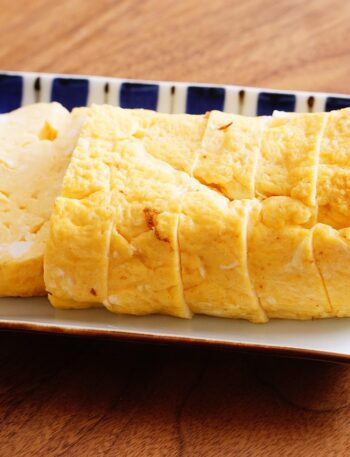Introduction
Japanese cuisine has a well-earned reputation for being delicious, balanced, and surprisingly healthy—but what about Sukiyaki? If you’ve ever had this rich, savory hot pot filled with thinly sliced beef, vegetables, tofu, and a flavorful soy-based broth, you might be wondering: Is this dish actually good for me? Or am I just making excuses to indulge in another bowl?
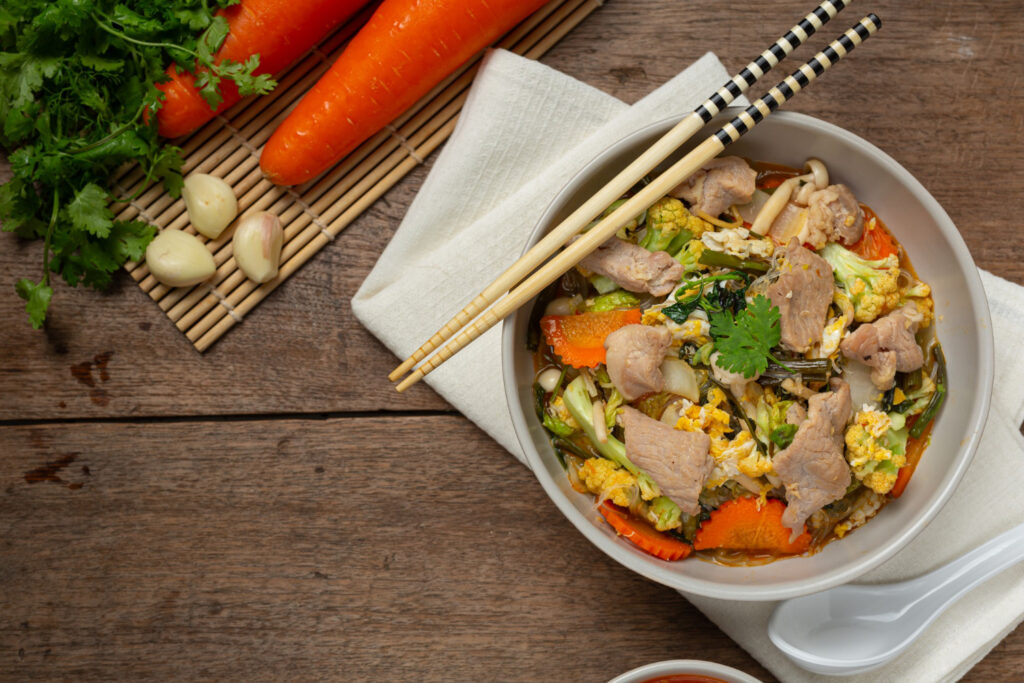
Well, good news! Sukiyaki can be both indulgent and nutritious, as long as you make the right ingredient choices. Whether you’re trying to eat healthier, lose weight, or simply enjoy a comforting meal without guilt, this guide will break down everything you need to know about Sukiyaki. Plus, we’ll compare it to other Japanese hot pot dishes!
Check out my Sukiyaki recipe here!
What is Sukiyaki?
Sukiyaki is a traditional Japanese hot pot dish that features a sweet and savory soy-based broth. Typically served in a shallow iron pot, it’s a cook-at-the-table experience where thinly sliced beef, vegetables, tofu, and shirataki noodles are simmered together.
The dish is often enjoyed by dipping the cooked ingredients into raw beaten egg, adding a unique layer of richness and texture.
Common Ingredients
- Thinly sliced beef – rich in protein but can be high in fat.
- Tofu – a great source of plant-based protein.
- Shirataki noodles – low in calories and carbs.
- Vegetables (shiitake mushrooms, napa cabbage, leeks, etc.) – loaded with fiber and vitamins.
- Soy-based broth – contains umami-rich soy sauce, mirin, and sugar.
Why is Sukiyaki Popular?
- Flavor-packed but simple to prepare.
- Perfect for social dining—it’s fun to cook and eat together!
- Customizable—you can swap ingredients for a lighter version.
Looking for easy Japanese hot pot recipe? Check out my recipe here!
How Does it Compare to Other Japanese Hot Pot Dishes?
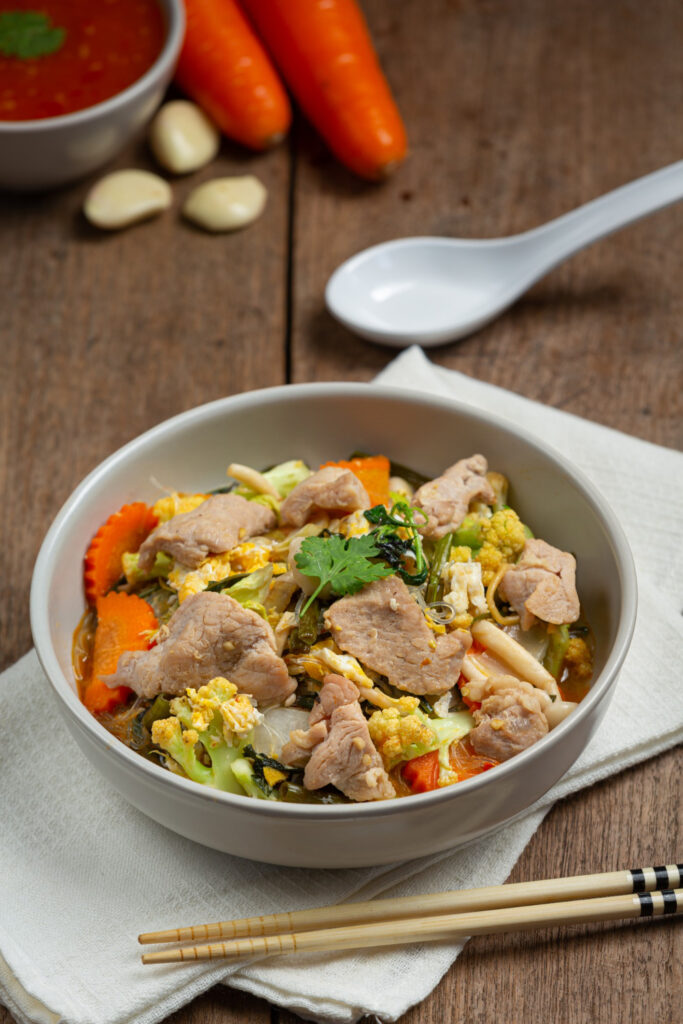
Japan has a variety of hot pot dishes, each with its own flavor profile and nutritional benefits. Here’s how Sukiyaki stacks up:
Sukiyaki vs. Shabu-Shabu
- Sukiyaki has a sweeter, thicker broth, often with more sugar and soy sauce.
- Shabu-Shabu uses a lighter kombu-based broth, making it lower in calories and sodium.
- Winner for weight loss: Shabu-Shabu! But Sukiyaki can be modified to be healthier.
Sukiyaki vs. Miso Nabe
- Miso Nabe is rich in probiotics thanks to its miso-based broth.
- Sukiyaki is higher in sugar but offers a richer, more indulgent flavor.
- Winner for gut health: Miso Nabe, due to its fermented miso paste.
Is Sukiyaki Healthy?
It depends on how you prepare it! Here’s how it can fit into a healthy diet:
The Good
- Rich in protein from beef and tofu.
- Packed with fiber from fresh vegetables.
- Customizable—you can opt for leaner meats and less sugar.
The Not-So-Good
- The soy-based broth can be high in sodium and sugar.
- Fatty beef cuts add extra calories—but can be swapped for leaner meat.
- Egg dipping adds cholesterol, though it also brings beneficial nutrients.
How to Make it Healthier
- Use lean beef or replace it with chicken or seafood.
- Reduce the amount of sugar in the broth.
- Add more vegetables and tofu for fiber and protein.
- Opt for shirataki noodles instead of rice to cut down on carbs.
Frequently Asked Questions
Sukiyaki is a sweeter, soy-based hot pot, while others like Shabu-Shabu and Miso Nabe use lighter broths with different nutritional profiles.
It can be! Stick to lean meats, more vegetables, and less sugar to make it a lower-calorie, high-protein meal.
Absolutely! You can swap beef for chicken, seafood, or even extra tofu for a healthier, lower-fat version.

